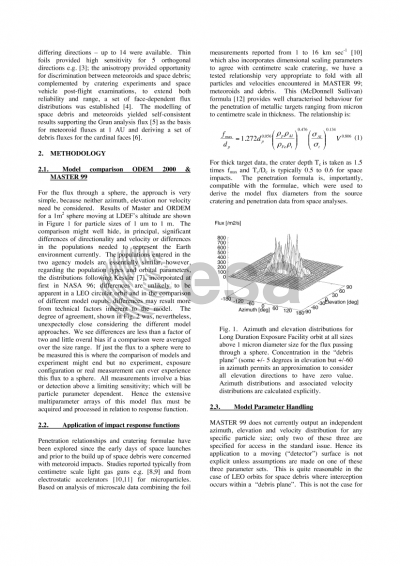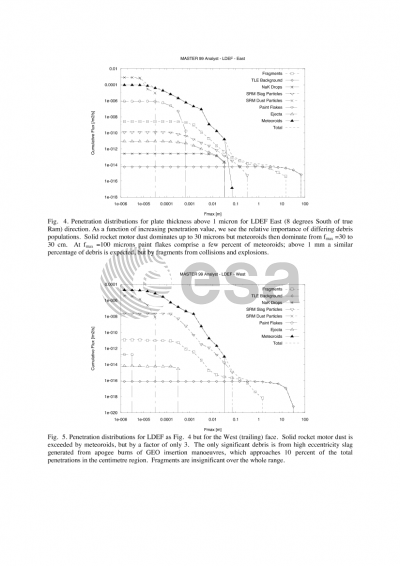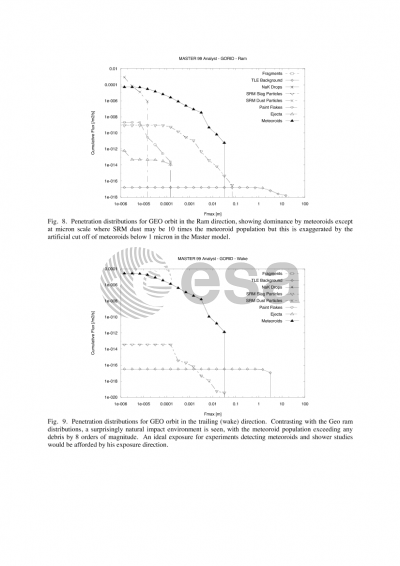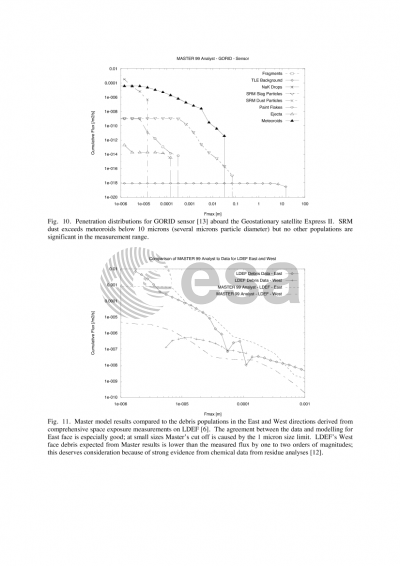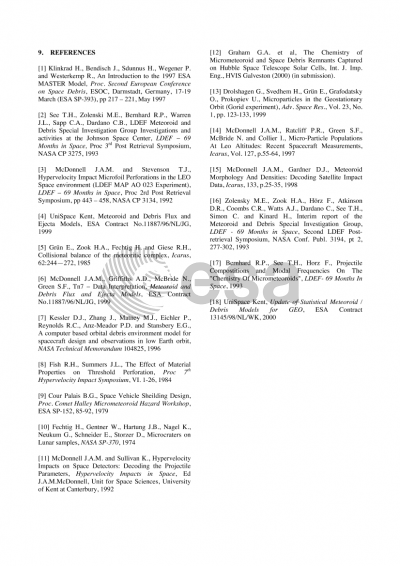Document details

Abstract
MASTER 99 offers a comprehensive tool for the characterisation of the particulate impact environment from GEO to LEO. We first compare the particle diameter distributions with those of NASA ORDEM 2000 for a circular LEO orbit and find good agreement. The models are not immediately applicable to spacecraft measurements, however, unless folded with the sensor orbit vector, the detection sensitivity function and information on the angular sensitivity of the detector. We have developed software to use the MASTER 99 Analyst output which generates the particle parameter distributions incident on to any type of detector with arbitrary pointing direction and orbital exposure parameters. The detector response chosen for the comparison presented here is the penetration of aluminium plate and results are compared to the debris fluxes deduced for LDEF (mean altitude 465 km) from examination of the excess flux of impact craters and penetrations above those of the meteoroid background; comparison is also made with residue analyses on LDEF and those from the retrieved Solar Array on the Hubble Space Telescope (altitude 650 km). Predictions are also made for the GEO environment, applicable to Geostationary satellites and potentially to results anticipated from the GORID plasma detector aboard EXPRESS II. It is found that MASTER 99 provides good general agreement between debris flux predictions and the those derived from LDEF; results are supported by the limited but critically important residue analyses. MASTER offers, additionally, a rich source of information from LEO to GEO, namely the interplay of different types of debris anticipated at different dimensions and the angular dependencies of different populations. The model shows that the meteoroid population is dominant for a penetration thickness ranging from 20 microns to 1 mm of aluminium; exposure configurations are identified which are essentially inaccessible to space debris and might, therefore, be used for meteoroid studies.
Preview

